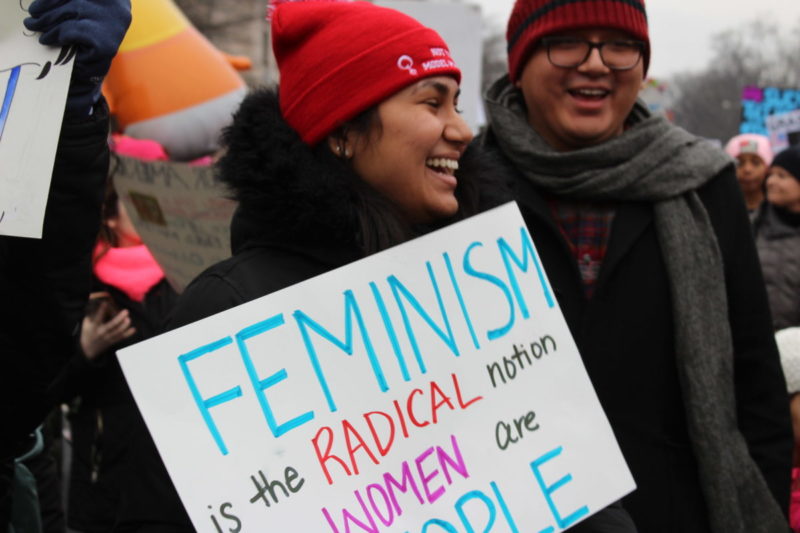From Health Care to Immigration: How to Achieve Visibility for AAPI Women
Reproductive Justice is at the heart of the long-term investments and resources that the AAPI community needs.

After the heartbreak of the deadly March shooting in Atlanta that took the lives of six Asian American women, our lived experiences were thrust into the spotlight. What used to be unseen by many—the intersections of our identities, the impact of racism, sexism, and hypersexualization on our lives—has become more visible.
Invisibility has long been felt by many Asian American and Pacific Islander (AAPI) women, whose experiences have gone unacknowledged and unaddressed by mainstream U.S. culture. The “model minority” myth tells us that all Asian Americans are well-educated and upwardly mobile, which erases the very real struggles of the community. This erasure is aided by the fact that dozens of ethnic subgroups are lumped together under the label AAPI, so that information about one group—on anything from cancer rates to wage gaps—gets hidden by the averages.
Since the Atlanta spa shootings, the floodgates have opened for a lot of Asian American women to start speaking out about their experiences with racism and sexism, and to demand visibility for their struggles. The model minority myth tells us it is safer to be quiet and keep our heads down. But this horrific act of violence shows that this is a lie, and we don’t want to be quiet anymore. We won’t go back to being invisible.
In the wake of this horrific violence, we are calling for more than a fleeting moment of attention. We need long-term investments and resources for the AAPI community to thrive. At the heart of these investments is Reproductive Justice.
Reproductive Justice is the human right to have a child and determine the conditions under which a person will give birth; the human right to not have a child and determine options for preventing or ending a pregnancy; the human right to parent the children one already has with the necessary social supports in safe environments and healthy communities, and without fear of violence from individuals or the state; and the human right to bodily autonomy free from all forms of reproductive oppression.
The term Reproductive Justice was coined by 12 Black women who recognized the need for an analysis that linked race and ethnicity, gender, class, and other identities and did not rely on an individualistic understanding of freedom or choice. We are grateful to the work done by Black women at the forefront of the movement to launch the framework we use today. The National Asian Pacific American Women’s Forum (NAPAWF) and ten other AAPI women’s organizations released today a Reproductive Justice Agenda with ten demands for change.
We need:
- Immigration reform that centers families
- Accessible and affordable health care
- Decriminalization of AAPI women’s bodies
- Eradication of the culture of gender-based violence
- Economic opportunity and access
- Protection of AAPI neighborhoods, communities, and homelands
- An end to militarism as a tool of colonization
- Racial justice
- Language access
- Data disaggregation in all agencies
The Reproductive Justice framework requires us to develop solutions that address the whole person, which is why our demands range from immigration and health care to demilitarization. To create our agenda, NAPAWF brought together a group of organizations serving AAPIs that focus on gender-based violence, housing and economic development, and immigration, among a variety of other issues. Together, we created this roadmap on how to create structural change and long-lasting solutions that would benefit AAPI women and girls, as well as AAPI families and communities across the country. We know that impactful change won’t come from working on singular issues in silos.
In practice, that means including AAPIs, one of the most understudied groups in the country, in data gathering and in implementing intersectional and comprehensive service-delivery models. It also means ensuring that policymakers make sustained investments directly into AAPI communities, ranging from funding for AAPI communities working on gender-based violence response and support—without being dependent on working with the criminal justice system—to discrete funding for Pacific Islander-led initiatives to support native populations on their homelands.
We envision a future in which AAPI communities can realize Reproductive Justice and reject the racism, misogyny, and hyper-sexualization that too often define what it means to be an AAPI woman in America. We call on our fellow activists and elected officials to engage directly with and create solutions with AAPI communities, centering those who have for too long been left out of these conversations. We will not bear pain and oppression in silence, nor will we be complacent in a system made to uphold white supremacy and sideline the needs of AAPI women.

